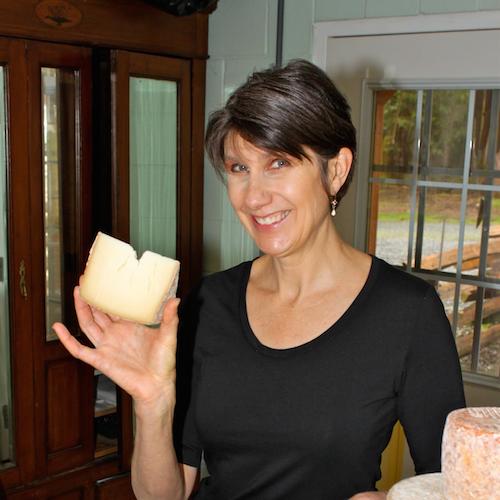
During a recent cheesemaking class, a student asked me if I dyed any of my cheeses. When I answered yes, I felt almost as if I were caught cheating. According to some turophile traditionalists, cheese should never be colored. However, many of us find that color stimulates the brain in a way that enhances flavor, plus it’s fun to experiment.
It’s thought that the practice of dyeing cheese and butter began in the 1700s to give the illusion that cheese made from skim milk was actually produced from creamy, full-fat milk and also as a way to mimic the naturally golden tones of cow’s milk cheeses made during summer months, when animals graze on lush, beta carotene-rich pastures. Beta carotene, which our bodies convert into vitamin A, lends an orange hue to vegetables such as carrots and pumpkins and a yellow cast to cow’s milk. A related compound gives a deep red color to the seeds of the achiote plant, a shrub native to tropical regions in South, Central, and North America. Annatto, the natural dye derived from these seeds, is the most common colorant used in dairy products today. Before Spanish explorers brought achiote back to Europe, cheesemakers used carrot and beet juice to achieve similar results.
Depending on the amount of annatto added to milk during cheesemaking, the resulting cheese can range in color from rich ivory to bright orange. Perhaps one of the most infamous examples of annatto-dyed cheeses, French mimolette has a flaking beige rind and is so deeply colored that cut wedges could be mistaken for cantaloupe slices. Made in the same shape and style as the Dutch Edam, it was purportedly created by decree of Louis XIV. According to Patricia Michelson in her book Cheese: Exploring Taste and Tradition (Gibbs Smith, 2010), mimolette was likely dyed its loud color as a snub to the Dutch Royal House of Orange.
Today cheesemakers use annatto for various reasons: to keep cheese color consistent throughout the year, to distinguish otherwise similar products from each other, to add visual interest, and, of course, to continue tradition.




